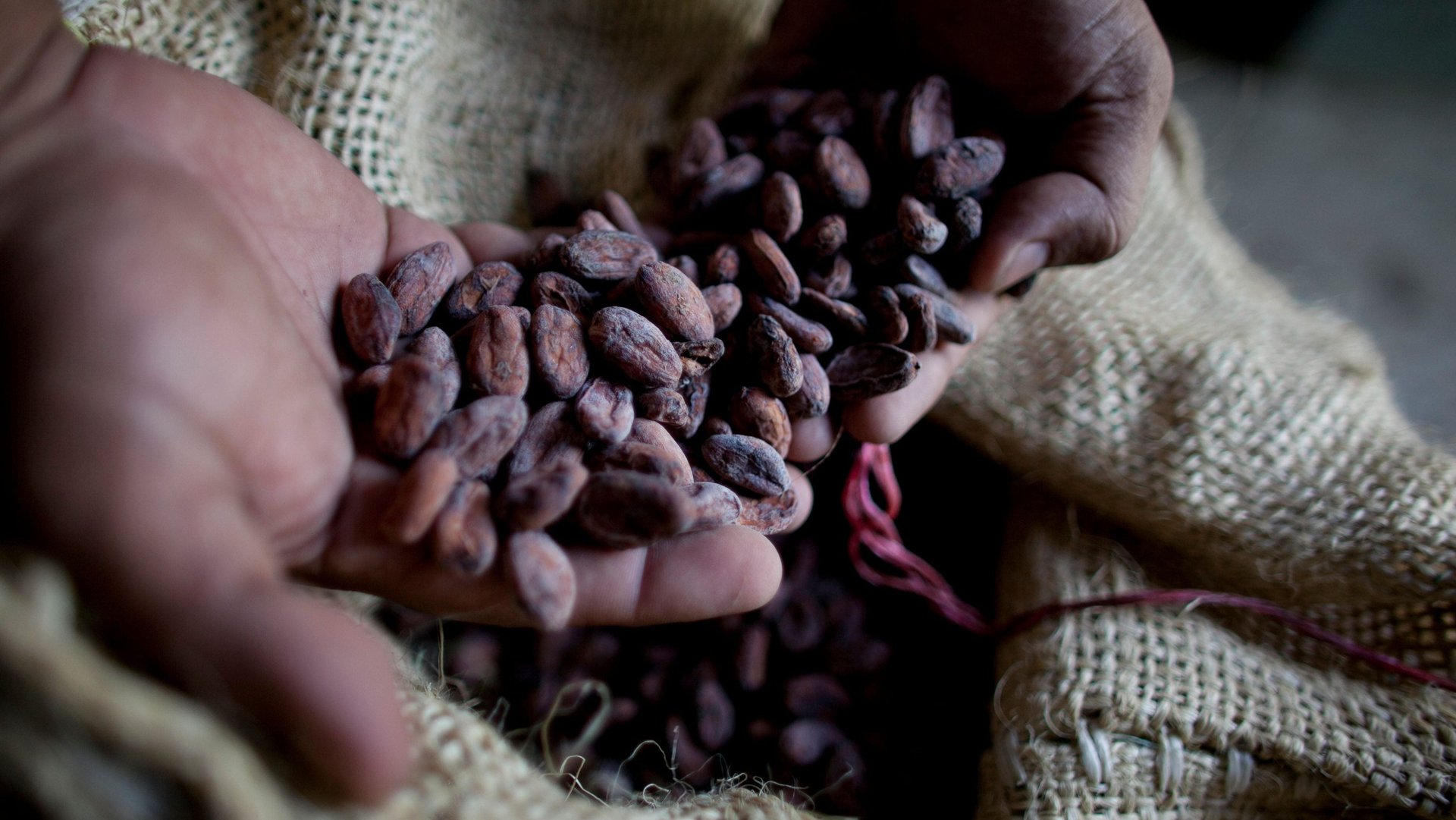People have been making chocolate for even longer than we thought
Humans and chocolate have serious history.


Humans and chocolate have serious history.
New research indicates that cacao was part of Mayo-Chinchipe culture about 5,300 years ago—1,500 years earlier than previously thought, and well south of chocolate’s presumed origin point in Central America.
In an article published in the journal Nature, Ecology & Evolution a team of researchers from the University of British Columbia outline how they pinpointed the beginning of our love affair with the cacao bean.
Michael Blake, an archeologist, was working with colleagues in present-day Ecuador, at Santa Ana-La Florida, the oldest-known site of Mayo-Chinchipe artifacts. “I noticed they had found some very elaborate pottery, and I suggested that the vessels kind of reminded me of the ones that the Maya used to make cacao [drinks],” Blake told Science. “I asked: ‘Is there any chance that these vessels might also have been used for cacao?’ And the answer came back: ‘Well, nobody’s looked.’”
Blake and his team tested the pottery in three different ways to determine whether it had been used to hold cacao. Charred cooking residue revealed starch grains with a shape distinct to cacao; a chemical analysis tested positive for theobromine, which is found in mature cacao pods; and cacao DNA was extracted from the pottery and matched to modern cultivars.
Before this, the earliest known cacao cultivation and processing was in Central America dating back about 3,800 years ago, though researchers have long suspected that earlier cacao use existed. South American pottery depicting cacao pods has been found in other archeological digs, and botanists have noted that the greatest genetic diversity in cacao trees is in the upper Amazon, near Santa Ana-La Florida, an indication that the plant originated there. It’s still unclear from the new research whether the Mayo-Chinchipe gathered wild cacao or cultivated it, or how the cacao made its way north.
The process that leads from cacao pod to Hershey bar is so complicated that it’s hard to comprehend how anyone ever looked at a cacao tree and saw a delicious possibility.
Ripe cacao on a tree looks something like an elongated squash. Once picked, the hard shells are cut open, and white pulpy pods pulled out, and piled together to undergo fermentation, which usually takes about a week. Once fermented, the seeds left behind are dried, and aged, then roasted and ground into a paste. While the chocolate we eat today is quite different than the cacao Central and South Americans were consuming several millennia ago, those first several steps were likely very similar in nature.
Once dried and aged, modern cacao beans undergo even more cleaning, roasting and processing, then most of them get mixed with sugar, and often cow’s milk as well, two ingredients that didn’t exist in Central or South America at the dawn of chocolate history.